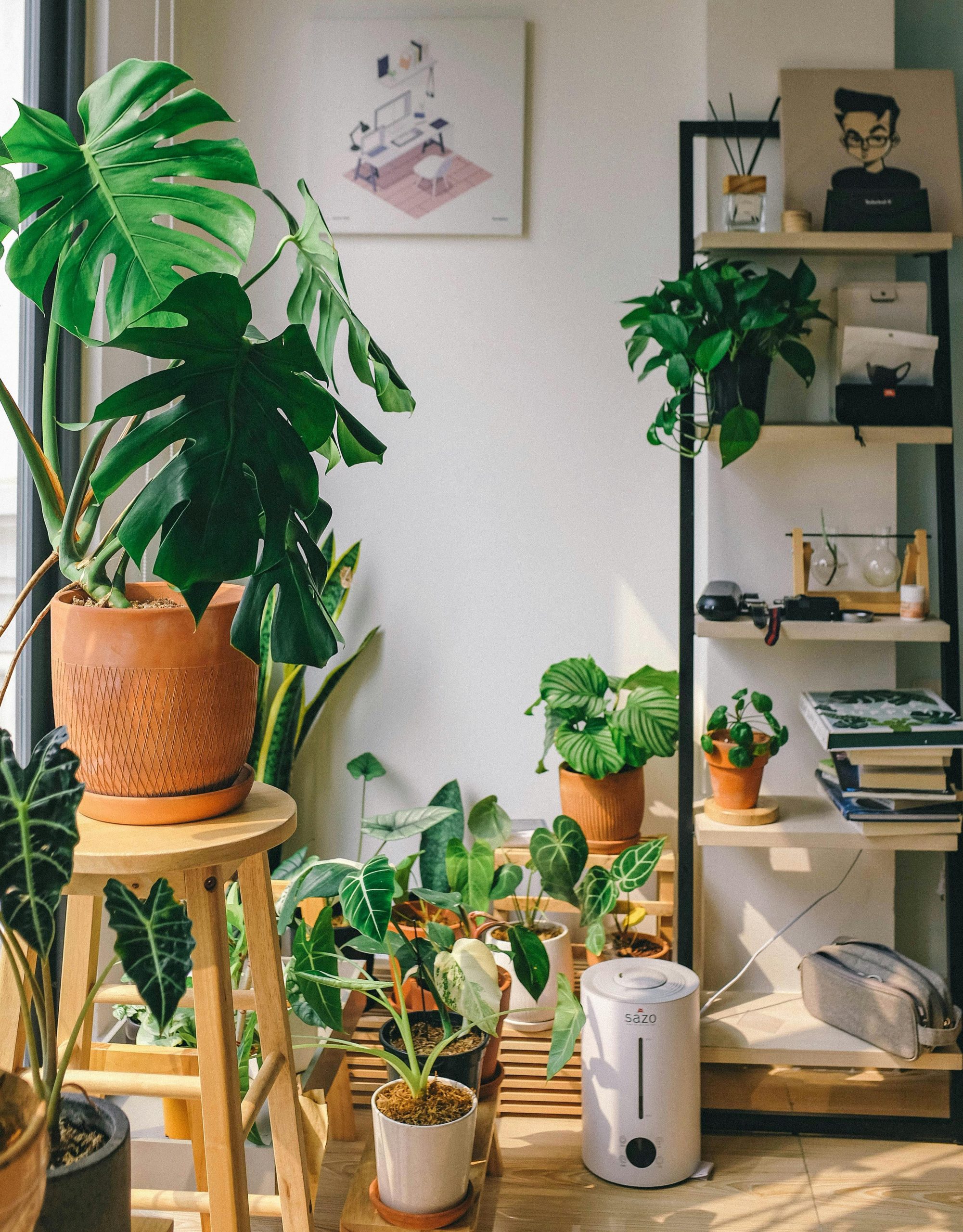Did you know that the air inside your home can be more polluted than the air outside? From dust to volatile organic compounds (VOCs) emitted by furniture and cleaning products, indoor air quality can significantly impact your health. Fortunately, nature offers a simple and beautiful solution—air-purifying indoor plants. These green companions not only enhance your home’s aesthetics but also filter harmful toxins, boost oxygen levels, and create a healthier living environment. Here are the 10 best air-purifying indoor plants to transform your home into a fresher, cleaner space.
Why Choose Air-Purifying Plants?
Indoor air pollution is a silent threat, often overlooked in our daily lives. Common pollutants like formaldehyde, benzene, and trichloroethylene can come from paints, carpets, and even household cleaners. NASA’s Clean Air Study found that certain plants are highly effective at removing these toxins while also increasing humidity and reducing airborne dust. Beyond their air-cleaning abilities, indoor plants reduce stress, improve focus, and add a touch of nature to your decor. Let’s explore the top plants that can make your home healthier.
Top 10 Air-Purifying Indoor Plants
1. Snake Plant (Sansevieria)
The Snake Plant, also known as Mother-in-Law’s Tongue, is a hardy plant that thrives in low light and requires minimal care. It’s particularly effective at filtering formaldehyde, xylene, and toluene—common toxins found in household products. What makes it unique is its ability to release oxygen at night, making it an excellent choice for bedrooms.
2. Spider Plant (Chlorophytum comosum)
If you’re new to plant care, the Spider Plant is a perfect starter. It’s resilient, grows quickly, and excels at removing carbon monoxide, formaldehyde, and xylene. Its arching leaves and tiny plantlets add a playful touch to any room, and it’s safe for pets.
3. Peace Lily (Spathiphyllum)
The elegant Peace Lily not only purifies the air but also adds a touch of sophistication with its white blooms. It’s highly effective at removing ammonia, benzene, and formaldehyde. Keep the soil moist and place it in indirect light for optimal growth.
4. Aloe Vera
Known for its healing properties, Aloe Vera also cleanses the air of formaldehyde and benzene. This succulent thrives in sunlight and requires minimal watering, making it ideal for busy homeowners. Plus, its gel can be used to soothe burns and skin irritations.
5. Boston Fern (Nephrolepis exaltata)
The Boston Fern is a natural humidifier and excels at removing formaldehyde and xylene. Its lush, feathery fronds add a vibrant green accent to any space. Keep the soil damp and mist the leaves regularly to maintain its health.
6. Bamboo Palm (Chamaedorea seifrizii)
This tropical plant is a powerhouse for filtering formaldehyde, benzene, and trichloroethylene. The Bamboo Palm thrives in bright, indirect light and can grow up to 12 feet tall, making it a striking addition to living rooms or offices.
7. Rubber Plant (Ficus elastica)
The Rubber Plant is not only stylish with its glossy leaves but also effective at removing formaldehyde from the air. It prefers bright, indirect light and moderate watering. Its large leaves also help trap dust particles, improving air quality further.
8. English Ivy (Hedera helix)
A versatile climber, English Ivy is excellent at reducing airborne mold and formaldehyde. It’s perfect for hanging baskets or as a trailing plant on shelves. Keep it in moderate sunlight and water when the soil feels dry.
9. Areca Palm (Dypsis lutescens)
Often called the “Butterfly Palm,” the Areca Palm is a top air purifier, especially for toluene and xylene. It’s also a natural humidifier, releasing moisture into the air. Place it near a sunny window and water it regularly.
10. Golden Pothos (Epipremnum aureum)
Also known as Devil’s Ivy, the Golden Pothos is nearly indestructible and great for beginners. It removes formaldehyde, benzene, and xylene while thriving in low light. Its trailing vines make it a beautiful choice for shelves or hanging planters.
Tips for Maximizing Air Purification
To get the most out of your air-purifying plants, follow these simple tips:
- Place plants strategically: Position them in areas where you spend the most time, like bedrooms or living rooms.
- Keep them healthy: Regularly wipe leaves to remove dust and ensure proper watering and sunlight.
- Use multiple plants: For larger rooms, place several plants to enhance air purification.
- Combine with other methods: While plants help, also ventilate your home and use air purifiers for best results.
Conclusion
Bringing air-purifying plants into your home is an easy, natural way to improve indoor air quality and enhance your well-being. From the low-maintenance Snake Plant to the elegant Peace Lily, there’s a perfect plant for every space and lifestyle. By incorporating these green allies into your decor, you’ll breathe easier, reduce toxins, and create a healthier, more vibrant home. Start small, experiment with different varieties, and enjoy the benefits of cleaner air and a greener living space.
